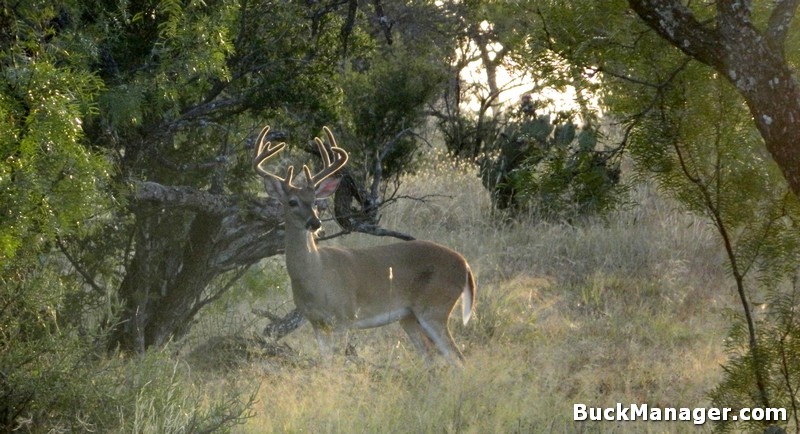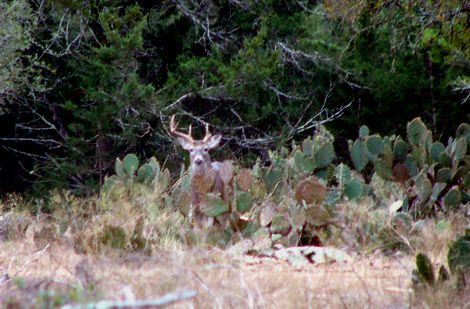Every animal, including white-tailed deer, has an area that they call home. In the wildlife world this area is know as home range. The home range of an individual white-tailed buck, however, varies by season. One would expect that the range of a buck would be fairly stable for much of the year, only to increase in size during the breeding season. This increase in range would be the result of the buck’s behavior and increased movement in his search for receptive does. Although thought to be true, does this phenomenon really happen?
Summer is a good time to be a whitetail buck. Not only do male deer get along, but packs of bucks run together in beloved bachelor groups. Hunters and managers alike get a thrill every time they stumble across a fraternity of whitetail. These observations often serve as confirmation that their harvest stategies or deer management programs are effective. We all like to see healthy bucks. Bachelor groups, by the way, can range in size from 2 to 3 deer up to as many as 28 bucks. At least that is the largest number of free-ranging bucks seen together that anyone has ever reported to me.
It is also during the summer that bucks move around a fair amount, but not as much as during the rut. As summer draws to an end, most bucks become less mobile and highly patternable. It is the time immediately after bucks shed their velvet that they become aggressive towards one another and a bit more territorial. By September, hunters at southern latitudes will start to see individual bucks visiting the same feeding areas again and again.
This is especially true for hunters that use game cameras to monitor their feeders, ag fields, and food plots. That is, if there is a spring food plot left to monitor after summer and the local deer have their way with it. During much of the summer, bucks will be picked up here and there on game cameras as they travel around the countryside eating where they may, but after developing hardened antlers it is a whole other story. A buck’s antlers are quite tender while covered in velvet. Not the case once they harden.
Changes is hormone levels in addition to physical changes cause bachelor groups to disband. Bucks flying solo will hone in on stable food sources and form a core area until the rut. During the breeding season, whitetail bucks will, for the most part, expand upon their summer range in search of receptive does. Following the rut, bucks will sink back into their core range.
A buck’s seasonal range increases and decreases based on many factors, but bucks fall into a very repetitive routine between the loss of velvet and the start of the rut. Year-in and year-out, white-tailed deer have a fairly predictable home range that will vary between seasons. Much a whitetail buck’s movements are determined by environmental conditions, food availability, and the breeding season. Whether you are a hunter looking to bag a buck this year or a landowner interested in better deer management, pay attention to the areas that whitetail bucks are using and use it to your advantage.


I have been watching two deer right outside my back fence. It is a doe and a buck, which is in velvet still, and they appear to be resting. They seem to take turns being on alert and sleeping. I didn’t think it was common for a doe and buck to be together after mating season. Anyway, I am just wondering if anyone else has seen this type of behavior? They are just outside my fence, which is at the bottom of the hillside here. They are resting in the shade and shadows of the big trees here. I have seem them before, but they never stayed more than a few minutes. Today they have been here for over 6 hours. Thanks for any insight you might have on this.
Linda, you are correct in that the majority of bucks do not associated with does after breeding season. However, young bucks will often group back up with their mothers through their first antler growing season. Keep in mind that these bucks were fawns through the first breeding season, but it’s not until they get to be about 1 1/2 years old or so (the following hunting season) that these yearling bucks get pushed away from mamma. My guess is that the doe will push him away soon, but if he’s persistent at hanging around then another older, bigger buck will most definitely motivate (fight) him to leave as the rut sets in!
Oh wow, that’s some interesting information. Been trying to figure out when these bucks move around on our hunting property.